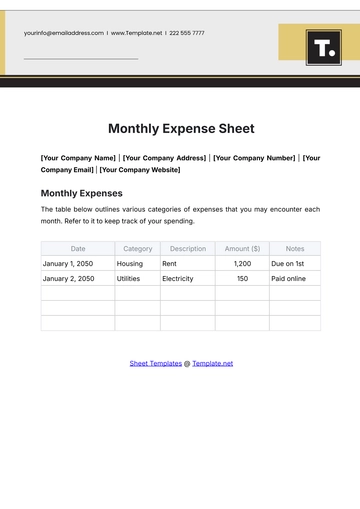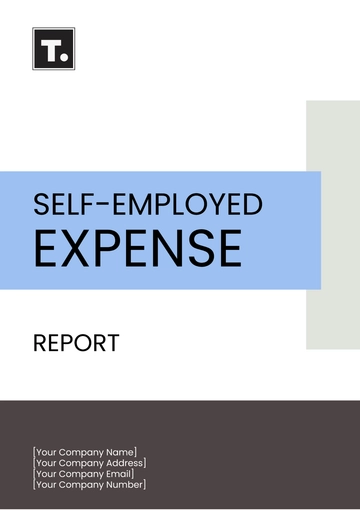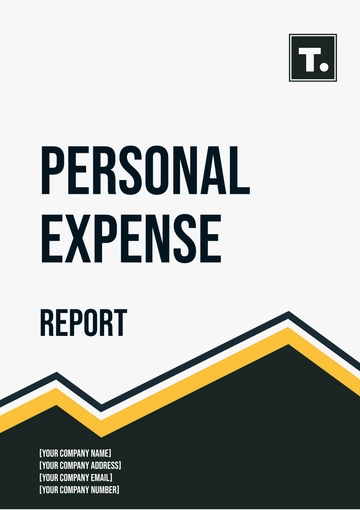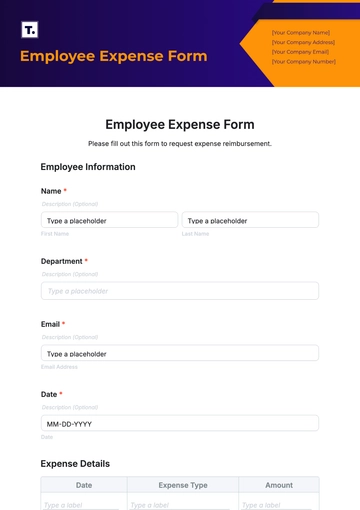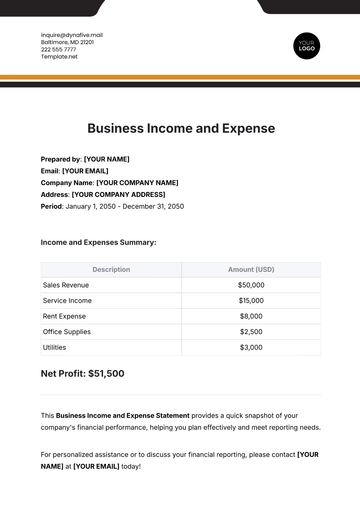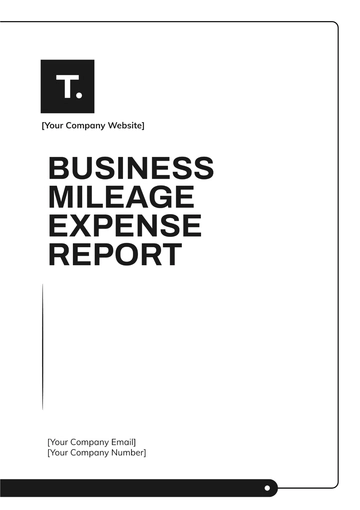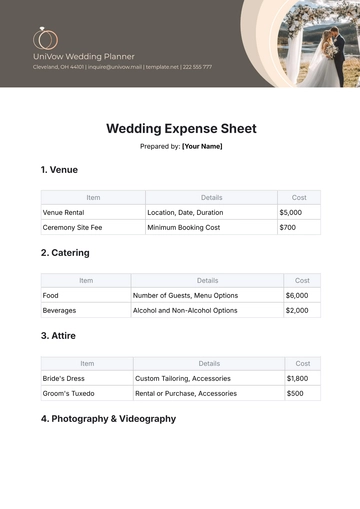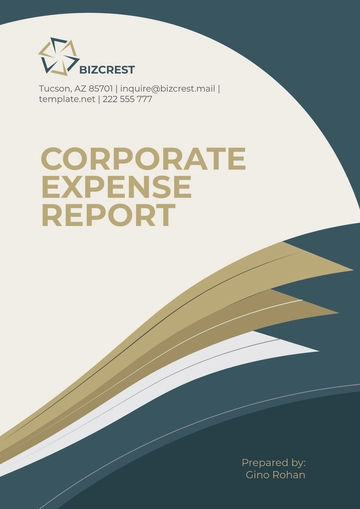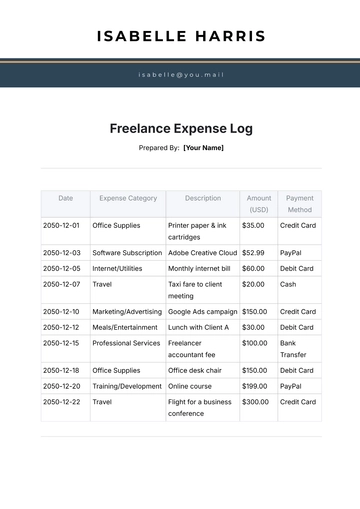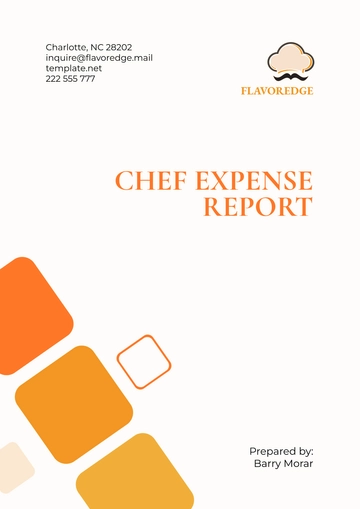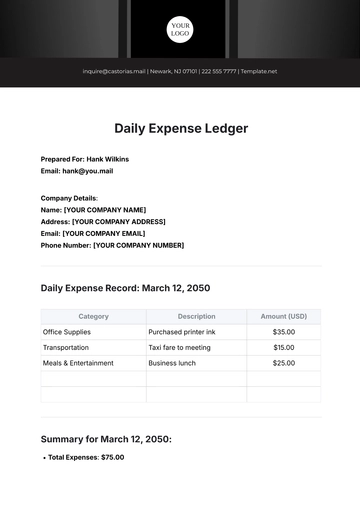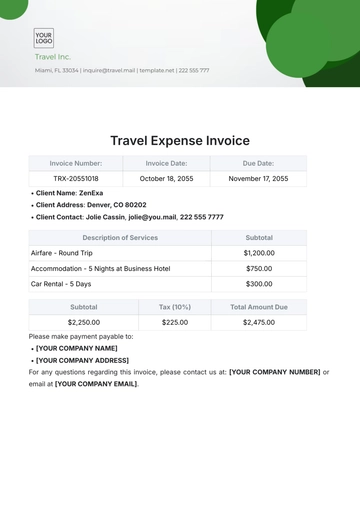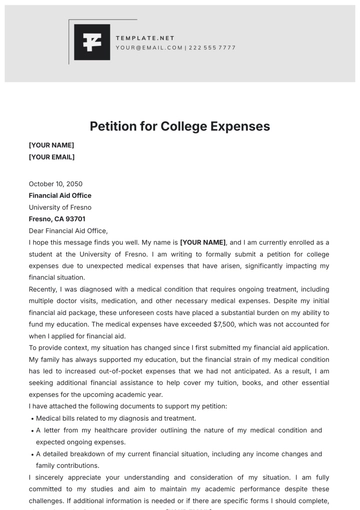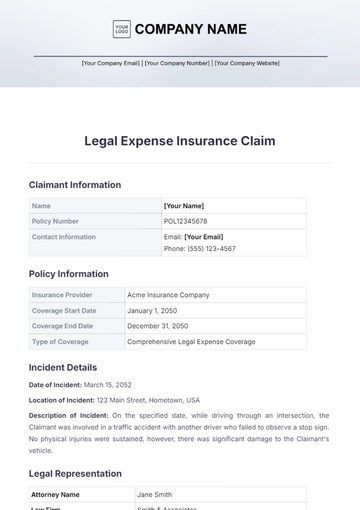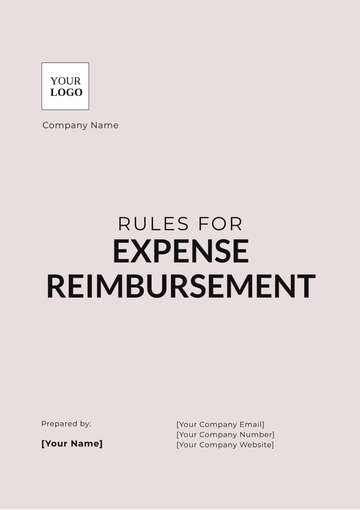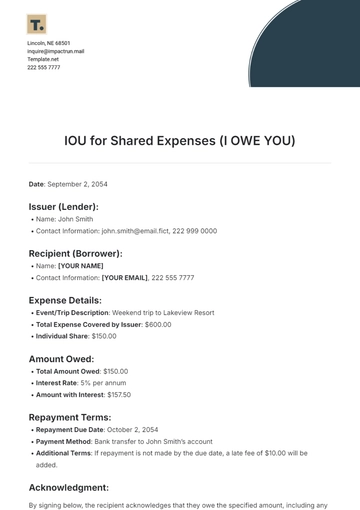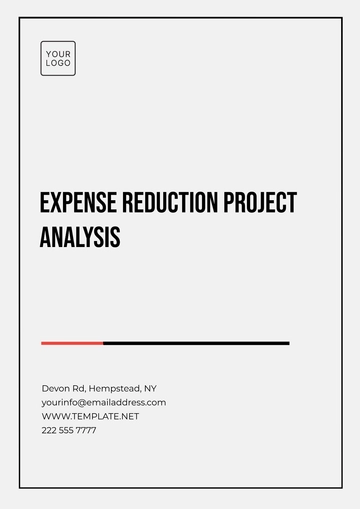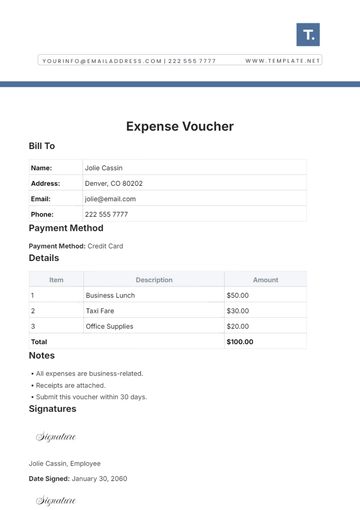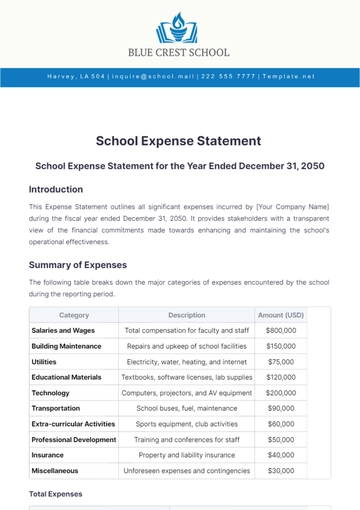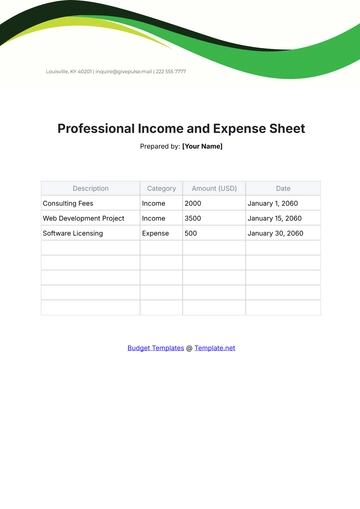Free Restaurant Annual Expense Report
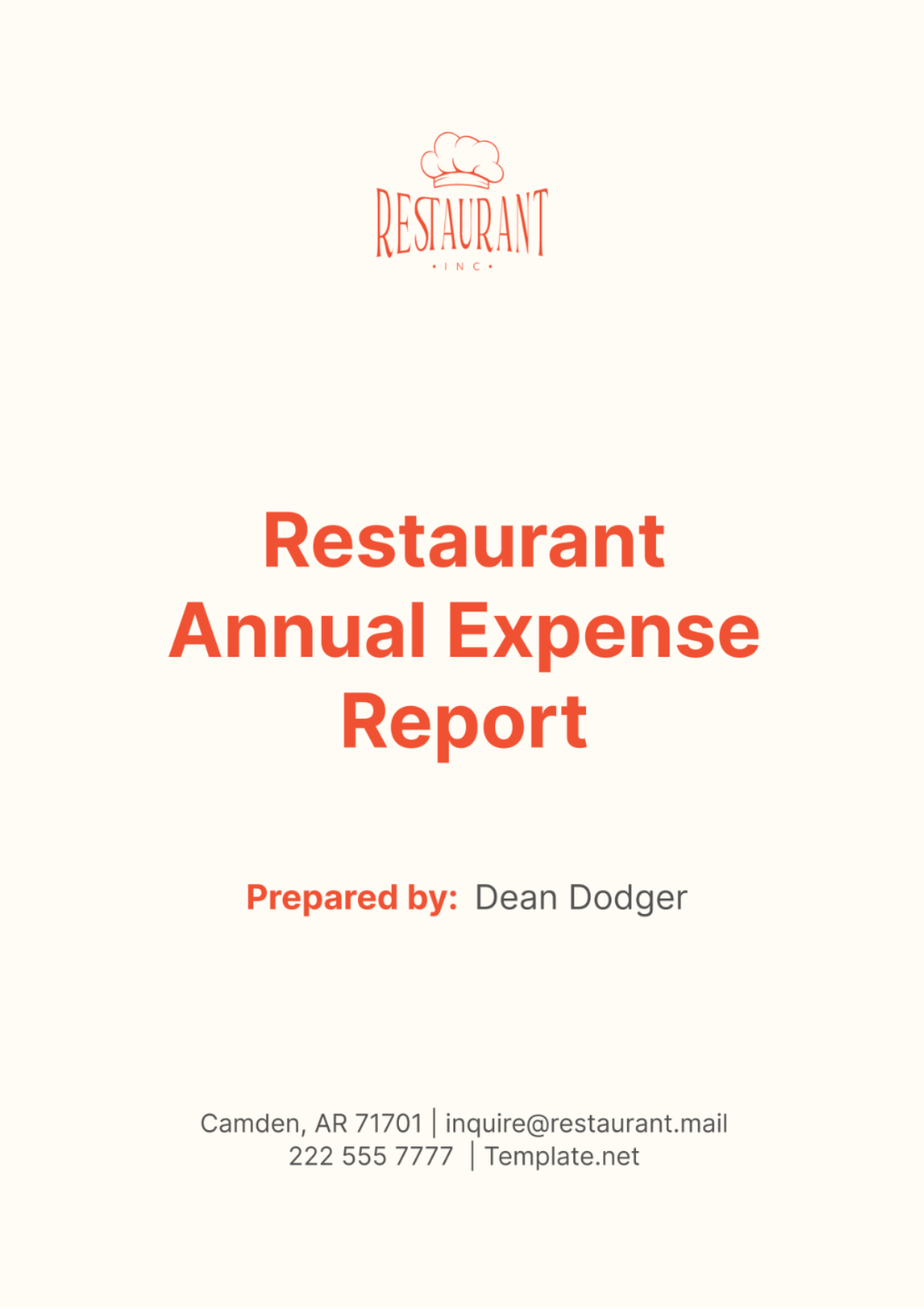
I. Introduction
A. Overview of the Restaurant
The [Your Company Name], established in [Year], has become a cornerstone of the local culinary scene, renowned for its commitment to showcasing the freshest seasonal ingredients sourced from nearby farms and producers. With a warm and inviting ambiance, the restaurant caters to a diverse clientele seeking elevated dining experiences in a relaxed setting. Over the years, the [Your Company Name] has earned accolades for its innovative cuisine and dedication to sustainable practices, solidifying its reputation as a destination for food enthusiasts and discerning diners alike.
B. Purpose of the Report
As part of our ongoing commitment to transparency and accountability, this report aims to provide stakeholders, including investors, management, and regulatory bodies, with a detailed overview of the [Your Company Name]'s financial performance for the fiscal year 2023. By meticulously documenting our annual expenses, we seek to facilitate informed decision-making, identify areas for improvement, and uphold the highest standards of financial stewardship in our operations.
II. Executive Summary
Total Annual Expenses: $[000,000]
Key Highlights
Despite industry challenges, the [Your Company Name] maintained robust financial health throughout the year, achieving a commendable balance between cost control and revenue growth.
Our strategic investments in marketing initiatives yielded tangible results, driving an uptick in customer engagement and bolstering brand loyalty.
While labor costs experienced a modest increase due to wage adjustments and seasonal hiring, stringent budgetary measures mitigated potential impacts on overall profitability.
Looking ahead, the [Your Company Name] remains poised for sustained success, with a steadfast commitment to culinary excellence, operational efficiency, and guest satisfaction at the forefront of our priorities.
III. Expense Categories
A. Food and Beverage Costs
Our commitment to quality ingredients is reflected in our food and beverage costs, totaling $[000,000] for the fiscal year. We prioritize sourcing locally whenever possible, forging partnerships with regional farmers and suppliers to ensure freshness and sustainability. By closely monitoring inventory levels and optimizing menu offerings, we strive to minimize waste and control costs without compromising on the integrity of our culinary offerings.
Expense Category | Amount ($) |
|---|---|
Cost of Ingredients | $[000,000] |
Beverage Costs | $[000,000] |
Cost of Goods Sold | $[000,000] |
B. Labor Costs
Labor costs represent a significant portion of our expenses, amounting to $[000,000] for wages, benefits, and payroll taxes. We prioritize investing in our team members, providing competitive compensation packages and opportunities for professional development. Despite fluctuations in staffing needs due to seasonal demand, we maintain a lean and efficient workforce through strategic scheduling and cross-training initiatives, optimizing productivity while containing labor expenses.
Expense Category | Amount ($) |
|---|---|
Wages and Salaries | $[000,000] |
Benefits | $[00,000] |
Payroll Taxes | $[00,000] |
C. Overhead Expenses
Overhead expenses, including rent, utilities, insurance, property taxes, and depreciation, totaled $[000,000] for the year. We negotiate favorable lease terms and diligently manage utility usage to minimize overhead costs. Our proactive approach to property maintenance and risk management helps mitigate potential disruptions and ensures the long-term sustainability of our operations.
Expense Category | Amount ($) |
|---|---|
Rent | $[000,000] |
Utilities | $[00,000] |
Insurance | $[00,000] |
Property Taxes | $[00,000] |
Depreciation | $[00,000] |
D. Marketing and Advertising Expenses
Marketing and advertising initiatives accounted for $[00,000] in expenditures, supporting our efforts to elevate brand awareness and drive customer acquisition. We leverage a mix of traditional and digital channels to reach our target audience, including social media campaigns, email marketing, and partnerships with local influencers. By analyzing the ROI of our marketing investments, we continuously refine our strategies to maximize impact and optimize cost-effectiveness.
Expense Category | Amount ($) |
|---|---|
Advertising Campaigns | $[00,000] |
Promotions | $[00,000] |
Marketing Materials | $[00,000] |
E. Equipment and Maintenance Costs
Equipment purchases, repairs, and maintenance expenses totaled $[00,000], reflecting our commitment to operational efficiency and guest satisfaction. We prioritize investments in high-quality kitchen equipment and furnishings to ensure reliability and performance. Regular maintenance checks and timely repairs help minimize downtime and extend the lifespan of our assets, reducing long-term costs and enhancing operational resilience.
Expense Category | Amount ($) |
|---|---|
Equipment Purchases | $[00,000] |
Repairs and Maintenance | $[00,000] |
Lease Payments | $[00,000] |
F. Administrative Expenses
Administrative expenses, including accounting fees, legal fees, office supplies, and software subscriptions, amounted to $[00,000] for the year. We leverage technology to streamline administrative processes and enhance efficiency, reducing the need for manual intervention and paperwork. Our prudent approach to expense management ensures that administrative costs are kept in check while maintaining compliance with regulatory requirements and industry best practices.
Expense Category | Amount ($) |
|---|---|
Accounting Fees | $[00,000] |
Legal Fees | $[0,000] |
Office Supplies | $[0,000] |
Software Subscriptions | $[0,000] |
G. Miscellaneous Expenses
Miscellaneous expenses, totaling $[00,000], encompass a variety of incidental costs essential to daily operations. These include repairs and maintenance, cleaning supplies, waste disposal, and other unforeseen expenditures. While individually minor, these expenses collectively contribute to the overall operational expenses of the restaurant, underscoring the importance of meticulous budgeting and financial oversight.
Expense Category | Amount ($) |
|---|---|
Repairs and Maintenance | $[0,000] |
Cleaning Supplies | $[0,000] |
Waste Disposal | $[0,000] |
Other Miscellaneous Costs | $[0,000] |
IV. Expense Analysis
A. Expense Trends Over Time
Analysis of expense trends over the past several years reveals patterns and fluctuations influenced by seasonal factors, market conditions, and strategic initiatives. By identifying recurring patterns and outliers, we gain valuable insights into areas of potential cost optimization and operational efficiency improvements.
B. Comparison to Budgeted Expenses
A detailed comparison of actual expenses to budgeted projections provides a comprehensive understanding of our financial performance. Discrepancies between budgeted and actual expenses are analyzed to identify root causes and implement corrective measures where necessary. This process helps ensure alignment with financial goals and enables proactive management of resources to maximize profitability.
C. Expense Ratios
Key expense ratios, including food cost percentage, labor cost percentage, and overhead cost percentage, are calculated to assess the efficiency of our operations. These ratios serve as benchmarks for evaluating performance relative to industry standards and historical data. By monitoring these metrics closely, we can identify areas of inefficiency and implement targeted strategies to improve cost management and profitability.
D. Variance Analysis
Variance analysis enables us to identify deviations from expected outcomes and investigate underlying factors driving these variances. By conducting a thorough analysis of variance drivers, such as changes in market conditions, regulatory requirements, or operational disruptions, we can develop actionable insights and recommendations for future decision-making. This process fosters a culture of continuous improvement and adaptability, enhancing our ability to navigate dynamic business environments effectively.
V. Recommendations and Action Plan
A. Areas for Cost Reduction or Optimization
Based on our analysis, several opportunities for cost reduction and optimization have been identified across various expense categories. These include renegotiating supplier contracts to secure better terms, implementing energy-saving measures to reduce utility expenses, and leveraging technology to streamline administrative processes and enhance efficiency.
B. Strategies for Improvement
To enhance profitability and operational effectiveness, we propose implementing targeted strategies tailored to address specific areas of concern. These may include introducing menu engineering techniques to optimize product mix and pricing, cross-training staff to improve flexibility and productivity, and diversifying marketing channels to reach new customer segments and enhance brand visibility.
C. Action Steps to Implement Changes
Effective implementation of proposed changes requires a structured action plan outlining key steps, responsible parties, and timelines. This may involve establishing cross-functional teams to oversee initiatives, conducting training sessions to equip staff with necessary skills and knowledge, and establishing performance metrics to monitor progress and measure success.
VI. Conclusion
In conclusion, the [Your Company Name]'s annual expense report provides valuable insights into our financial performance and strategic priorities. By leveraging data-driven analysis and proactive decision-making, we are well-positioned to navigate challenges, capitalize on opportunities, and sustain long-term success. Moving forward, we remain committed to optimizing expenses, enhancing operational efficiency, and delivering exceptional experiences that delight our guests and drive business growth.
- 100% Customizable, free editor
- Access 1 Million+ Templates, photo’s & graphics
- Download or share as a template
- Click and replace photos, graphics, text, backgrounds
- Resize, crop, AI write & more
- Access advanced editor
Providing restaurateurs with a comprehensive financial overview, the Restaurant Annual Expense Report Template from Template.net offers an editable and customizable solution. Utilizing an AI Editor Tool, effortlessly analyze expenses and trends. Seamlessly tailor the report to your establishment's needs, ensuring transparency and informed decision-making. Streamline financial management and elevate operational efficiency with this indispensable tool.

